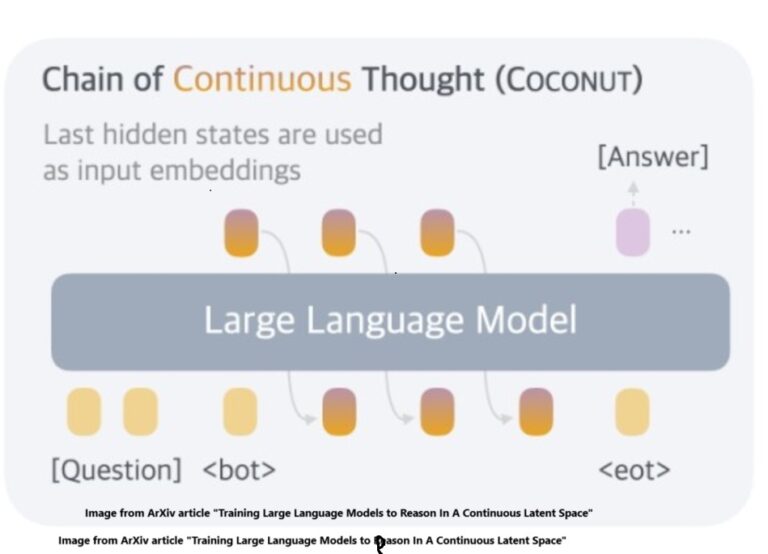Examining GRPO and DeepSeek-R1
Abstract
Group Relative Policy Optimization (GRPO) stands out as a remarkable advancement in reinforcement learning (RL), providing a specialized approach that has significantly enhanced the reasoning performance of DeepSeek-R1. Moreover, ongoing references suggest that the soon to be released DeepSeek-R2 may build upon similar methodologies to achieve further improvements. By examining the foundations of GRPO, discussing its implementation in DeepSeek-R1 and presumably in DeepSeek-R2, and exploring how its advantages can be leveraged without using the DeepSeek API, this blog aims to illuminate the transformative potential of GRPO for large-scale AI applications. The following sections present a detailed analysis of how GRPO galvanizes cutting-edge capabilities in reasoning tasks, code generation, and step-by-step problem-solving.
Introduction
Reinforcement learning has witnessed tremendous evolution in recent years, moving from traditional value-based methods toward policy-based and actor-critic approaches. Within these developments, GRPO has emerged as a specialized framework for policy optimization. Unlike conventional methods that rely heavily on learned baselines or critics, GRPO employs a group-based mechanism to evaluate and normalize rewards, thus forging a more fine-grained feedback loop. DeepSeek-R1 demonstrated the impact of GRPO’s design. According to the publicly shared research, DeepSeek-R1 started as a base model (DeepSeek-V3-Base) and was trained with large-scale RL, specifically GRPO, to achieve top-tier performance on math, coding, and reasoning benchmarks as discussed in this paper: DeepSeek-R1: Incentivizing Reasoning Capability in LLMs Via RL Per reference, DeepSeek GitHub , reinforcement learning is directly applied to the base model without relying on supervised fine tuning (SFT) as a preliminary step. This enables DeepSeek-R1 to implement complex chain-of-thought (CoT) reasoning, such as self-verification and reflection, which emerge naturally through reinforcement signals rather than purely supervised fine-tuning. Although public sources chiefly discuss DeepSeek-R1, it is reasonable to infer that the soon to be issued DeepSeek-R2 may follow in its footsteps, likely incorporating enhancements or additional training data to achieve even higher performance. Outside of DeepSeek-based solutions, the general AI community can exploit GRPO’s capabilities by integrating it into custom applications that require complex decision-making and rigorous multi-step reasoning. Developers using open-source models can adopt GRPO without fully adopting the DeepSeek API, bringing the advantages of stable reward scaling: What Is the Alignment Objective of GRPO? In the sections below, we first explore the technical underpinnings of GRPO and why it has proven so effective in fostering step-by-step problem-solving. We then discuss how DeepSeek R1 harnesses GRPO specifically, with brief remarks on DeepSeek R2. Next, we further examine the benefits of GRPO beyond the DeepSeek ecosystem.

Origins of GRPO
Group Relative Policy Optimization emerged as a variant of more classic RL approaches, including Proximal Policy Optimization (PPO). The fundamental goal behind GRPO is to guide a policy model to sample and compare multiple outputs for each prompt or context within the same training step, thereby providing a more direct estimate of relative quality. Traditional actor-critic methods use a baseline to normalize returns, while GRPO explicitly groups outputs together, measures their performance relative to each other, and scales the policy gradient accordingly. One of the motivations for GRPO, as described in technical literature, is that it supports large language models in discovering step-by-step solutions by incentivizing longer “thinking time.” By contrasting multiple potential completions, each iteration encourages or penalizes certain solution paths relative to their peers. This promotes the emergence of advanced reasoning patterns that are more difficult to capture with single-output–based reward normalization.
Mechanics of Group-Based Advantage
A key aspect of GRPO is its unique way of deriving the advantage function. Instead of an absolute reward (or Q-value) that depends solely on the current output, GRPO calculates an advantage by comparing the reward of the chosen output to the average (and the standard deviation) of all sampled outputs within the group. Specifically: 1) For each context (i.e., a question or prompt), the policy samples multiple candidate responses. 2) The reward is computed for each response, whether by a rule-based system (for math, code, or factual tasks) or by a learned reward model. 3) The advantage for each response is normalized so that it reflects how well it performs relative to its siblings in the group. This emphasizes “standing out from the crowd” rather than an absolute reward metric alone. By relying on local comparisons, GRPO becomes robust to shifts or scaling in the reward function. For instance, if the reward for all outputs is consistently high or consistently low, the advantage measure resets the baseline such that only comparatively better (or worse) outputs get rewarded or penalized.
Divergence Penalty and Training Stability
As with many RL fine-tuning methods for language models, GRPO also employs a divergence penalty to keep the newly learned policy from drifting too far from a reference policy In many prior RL methods, such a penalty might approximate the Kullback–Leibler (KL) divergence between the policy and a baseline. GRPO’s approach has been shown to effectively match or exceed conventional PPO-based methods in maintaining stability, preventing catastrophic forgetting, and enabling large-scale training across diverse tasks. When scaling up the number of parameters, preventing mode collapse or repetitive droning is important. GRPO’s emphasis on group-based comparisons, along with an effective penalty on divergence from a reference policy, appears to yield a training process that is both stable and open to emergent chain-of-thought behaviors.
DeepSeek-R1: Embedding GRPO at Scale
The DeepSeek-R1 model began as “DeepSeek-R1-Zero,” which was trained purely via large-scale reinforcement learning from a base model without extensive supervised fine-tuning. Through GRPO, DeepSeek-R1-Zero quickly developed powerful step-by-step reasoning and reflection abilities. However, early versions of R1 had readability issues (inconsistent language usage, occasional garbled text). The final DeepSeek-R1 overcame those drawbacks by incorporating additional “cold-start” data and supervised fine-tuning to refine its chain-of-thought style. Evaluation metrics published for DeepSeek-R1 illustrate remarkable gains in problem-solving tasks, surpassing earlier open models and matching or exceeding the performance of well-known commercial LLMs in certain benchmarks. These results underscore the potency of GRPO in: 1) Mathematics competitions such as AIME or advanced coding challenges like Codeforces. 2) Factual question-answering, where correctness can be explicitly measured. 3) Creative or multi-step tasks, including generating coherent explanations or code solutions.
Emergent Phenomena
An outcome of GRPO-based training in DeepSeek-R1 was the emergence of a phenomenon described informally as an “aha moment.” During RL, the model spontaneously began generating more extensive reasoning steps upon realizing that longer CoT sequences tended to maximize overall returns. This includes: 1) Reflection: The model would revisit earlier reasoning steps to correct or refine them. 2) Verification: The model would cross-check certain intermediate computations. Such behaviors highlight the synergy between group-based advantage normalization (which amplifies the difference between reasoned and non-reasoned responses) and the final reward function anchored to correctness or solution quality.
Advantages of GRPO
Fine-Grained Comparisons: Unlike single-output–based RL, GRPO’s group comparison ensures that each sampled output is assessed relative to other candidates within the same batch. This can drastically reduce noise in advantage estimation, making it more robust even if the reward signals are somewhat sparse. Adaptive to Various Task Domains: GRPO has proven its flexibility in tasks as diverse as math, code generation, factual QA, and more creative tasks like story writing. Thanks to the group normalization, subtle differences in final accuracy or plausibility get amplified, guiding the model to choose consistently “better” paths in a stable manner. Emergent Chain of Thought: As seen with DeepSeek-R1, GRPO fosters emergent chain-of-thought processes where the model invests longer time thinking through a solution. This can manifest as reflection or repeated self-checking, behaviors that have proven critical in tasks requiring multi-step logic. Large-scale models risk collapsing into repetitive or degenerate modes under naive RL. “Mode collapse” refers to a situation where a large language model—especially one trained via reinforcement learning—begins to generate repetitive or overly narrow outputs instead of exploring the full diversity of possible responses. Essentially, the model “collapses” to a limited set of answers or patterns, so it no longer exhibits variety or creativity in its output. With GRPO’s group advantage mechanism and divergence penalty, it becomes less likely for the policy to degrade into monotonous output generation. When combined with a moderate reference model alignment, the approach keeps the new policy in check.
Using GRPO Without the DeepSeek API
Developers may wish to incorporate GRPO into their projects without adopting DeepSeek-R1 or R2. This is entirely feasible. As documented in the technical notes on GRPO, the steps would be: 1) Reference Model Setup: Identify your baseline or reference policy. This could be a well-known open-source model (e.g., Llama or Qwen). 2) Group Sampling Mechanism: For each prompt, sample multiple outputs and compute a reward for each. The reward can come from rule-based checks (for example, code test cases or math problem verifiers). 3) Advantage Computation: Normalize advantage across the group, so that each output’s advantage is measured relative to the group’s mean and standard deviation. 4) Policy Update with Divergence Penalty: Apply a gradient update that both maximizes your group-relative advantage and enforces a moderate divergence penalty from the reference distribution. At present, some open-source toolkits implement variations of GRPO or make it straightforward to introduce group sampling on top of standard PPO. By consulting the original or simplified references on group advantage functions, developers can adapt existing reinforcement libraries with minimal overhead.
Hardware and Efficiency Considerations
One concern is that generating multiple outputs per training step implies heavier computational loads. These techniques can help mitigate this concern: 1) Parallelization: Efficient parallel sampling on GPUs or clusters can offset the group sample cost. 2) Batch Collation: Combining smaller groups into larger mini-batches can reduce overhead for advantage computation. 3) Adaptive Group Sizes: Not all tasks demand large group sizes. In many practical contexts, sampling a small group (e.g., four to eight outputs per prompt) is enough to see emergent reasoning benefits.
Custom Rewards
Outside of the math/coding domain, reward functions may rely on external APIs, classifiers, or even partial human feedback. GRPO’s local comparison approach can handle these custom signals gracefully, so long as each group’s output can be assigned a relative score. This flexibility fosters use-cases in text summarization, puzzle-solving, and cross-lingual translation.
Potential Pitfalls and Solutions
Potential pitfalls are: 1) Overly Sparse Rewards: If the reward is zero for almost all outputs, or if the difference in quality among group outputs is negligible, the advantage function can become difficult to optimize. Consider broadening the domain or providing partial-credit scoring. 2) Reference Drifting: Even though GRPO includes a divergence penalty, if the reference policy is too weak or too different from the final target, training might still drift. Tuning the penalty constant (often called β) is crucial.
Conclusion
GRPO offers a refined pathway for training large language models on complex, multi-step tasks. Within DeepSeek-R1, it has driven the emergence of advanced chain-of-thought reasoning, delivering strong performance in math, coding, and open-ended reasoning challenges. While the exact details of DeepSeek-R2 are not available, it is reasonable to project that it builds upon the same GRPO-based foundations. The uniqueness of this method lies in its local comparative advantage estimation—sampling multiple outputs, computing a shared baseline, and then updating the policy in a stable, divergence-aware manner. By adopting GRPO outside the DeepSeek ecosystem, organizations and researchers can tap into these benefits for their own specialized models. Whether the goal is advanced chatbots, domain-specific coding assistants, or multi-step scientific analyses, the group-based approach to policy optimization stands as an effective design, proven at scale.
Impact Statement
As the AI community continues to seek more transparent, controllable, and powerful large-scale models, GRPO sets a precedent for how reinforcement learning can align advanced language models to human-desired outputs. We encourage enterprises, research labs, and open-source enthusiasts to explore integrating GRPO into their next-generation solutions. We offer specialized consulting, platform integrations, and end-to-end solutions to help you harness the power of GRPO. By partnering with us, you gain: 1) Guided Implementation of GRPO for customized use-cases. 2) Technical Expertise in reward design, scaling, and policy optimization. 3) High-Performance Infrastructure tailored to large-model training and inference. Join us to implement a project that merges the best of cutting-edge reinforcement learning technology with practical technology. We invite your organization to realize the transformative power of GRPO for your AI solutions—robust, reliable, and innovative.

